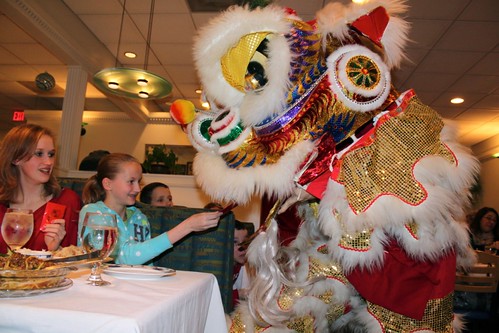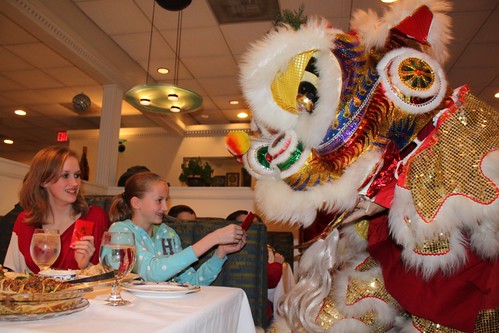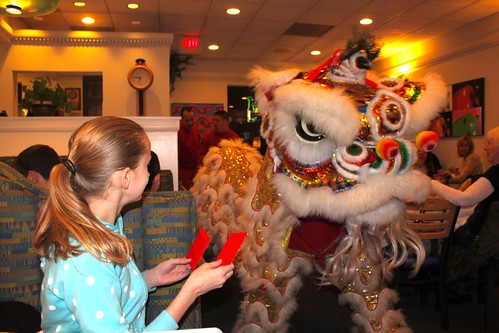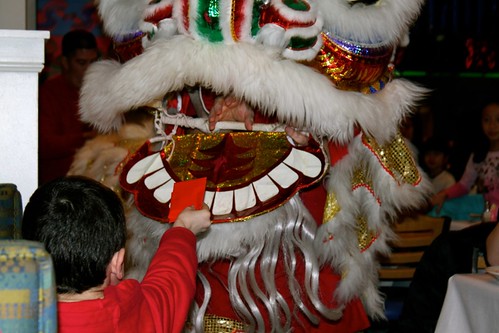Chinese New Year: Lessons in Lion Dancing
Have you ever seen a lion dance? In the Chinese culture, for each New Year the lion dance is part of the traditional ceremony meant to chase away evil spirits and to shower people with prosperity (in the form of lettuce, but I’ll get to that).
This year, the Chinese New Year falls on February 16th, but celebrations are held throughout the month. One of those celebrations is the lion dance. We had a chance to watch the lion dance at our local Chinese restaurant, which was crowded with parents and children eager to watch.

The lion dance tradition dates back a thousand years; most accounts put it as originating some time in the Han Dynasty, third century B.C. With such a long history, it’s not surprising that origin stories are plentiful: One account involves an Emperor’s dream and another of a mythical jokster. Still other stories revolve around a lion either terrorizing or protecting a small village.
There are two types of “lions”: Northern and Southern. You can spy a Northern lion by its long mane and snout. Northern lions dance more like a peppy dog with playful, quick movements. The Southern lion dance is more about stances and movements matching the beat of a drum, cymbal, and a gong.

The lion dance involves two performers—one to move the front legs and head and the other who is bent over, working the back legs and tail. I noticed when watching the lion work its way through the restaurant that a third performer switched places with the back performer. I’m sure it’s difficult for the performer to stay bent over for too long.

To bring good luck for the coming year, make sure to feed the lion during its performance. And just what do you feed a lion? Place money into a red envelope and place it in the lion’s mouth as it goes by. The red envelope, called a Hong Bao, is often used in Chinese culture as a way to gift money to someone—lion, or otherwise.

A pivotal part of the lion dance—and frankly, one of the most entertaining—is the eating (sometimes also translated as “plucking”) of the greens. The lion approaches vegetables—lettuce is a common choice—and dances around them before “eating” them. The lion then spits out the vegetables to shower those in attendance with good fortune. Our lion also shot out oranges, which one young girl excitedly caught in her hands. My tween loved the idea that lettuce pieces sprinkled on her head would bring her luck. The whole atmosphere was lively and fun and a great way to usher in the Chinese New Year.
You can watch a video of the lion dance our family saw here with your kids. Who knows—they might be inspired to perform a DIY lion dance at your house. They could make their own lion using paper and some old sheets.
Kristen J. Gough is the Global Cuisines & Kids Editor for Wandering
Educators. She shares her family's adventurous food experiences--and recipes--at MyKidsEatSquid.com.
Photos courtesy and copyright Kristen J. Gough
This article was originally published in 2013 and updated in 2018
-

- Log in to post comments



















